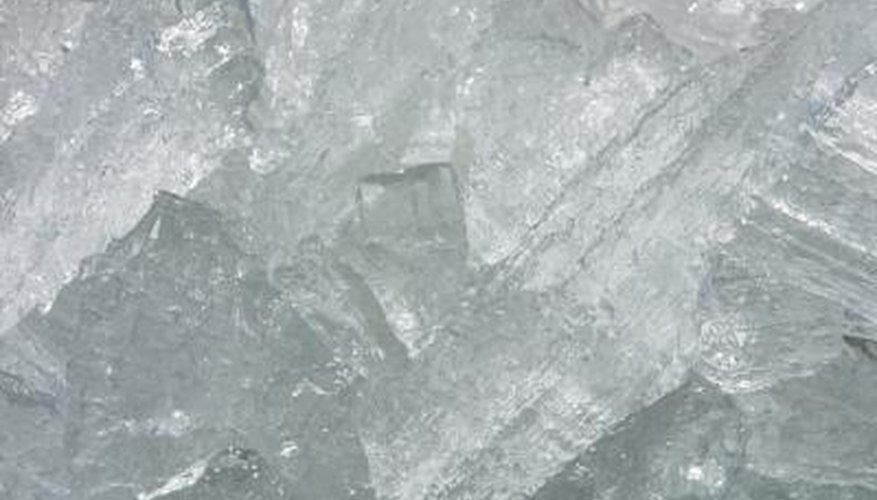Cookbooks often instruct the reader to wrap food in aluminium foil or cling film. Consumers frequently use the products interchangeably, despite the difference in the two materials: metal and plastic. Both come in rolls but do not have the same properties.
Consideration
When debating the issue of which , aluminium foil or cling film, keeps ice colder, consider that consumers often use aluminium foil as an insulator. When placed on windows, foil reflects a significant percentage of the heat, thus keeping the heat from entering the home. While cling film might form a barrier when placed over an entire window frame, keeping drafts from entering, it doesn't have the same reflective properties as foil.
Kitchen Experiment
One way to compare the two products is to put them to a kitchen test. Tear off a sheet of aluminium foil and a sheet of cling film. Make the two sheets identical in size. Take two ice cubes from the freezer, and weigh each one. Use two ice cubes that are the same size and weight. Wrap one ice cube in foil and one in cling film. Let them sit on the kitchen counter for about 30 minutes. You should discover that the ice cube wrapped in the foil was about half the size as the one in the cling film.
- One way to compare the two products is to put them to a kitchen test.
- Take two ice cubes from the freezer, and weigh each one.
Location
Before assuming one kitchen experiment proves cling film superior for keeping ice cold, consider the fact foil wraps snuggly around the ice, whereas the cling film doesn't stay tightly affixed to the ice cube, falling away slightly thus creating its own layer of insulation, a cold layer of air between the plastic and ice. If placed on a warm counter, the aluminium foil in essence puts the warm counter more directly in contact to the ice cube, compared to a loosely fitting sheet of cling film.
Science Experiment
A science experiment, posted on the All Science Fair Projects website, dealt with water temperature, as opposed to ice temperature. But the experiment had different results from the kitchen counter experiment and proved the hypothesis that aluminium foil keeps water cold for a longer period compared to cling film.
Freezing Food
When freezing food instead of ice, the advice often given is to use both products together. For example, if freezing fish, first wrap the fish in cling film, then wrap the package tightly in aluminium foil. The cling film helps prevent the fish from freezer burn, while keeping the foil from sticking to the fish after freezing. The foil keeps the package tightly wrapped and sealed.
- When freezing food instead of ice, the advice often given is to use both products together.
- The cling film helps prevent the fish from freezer burn, while keeping the foil from sticking to the fish after freezing.
